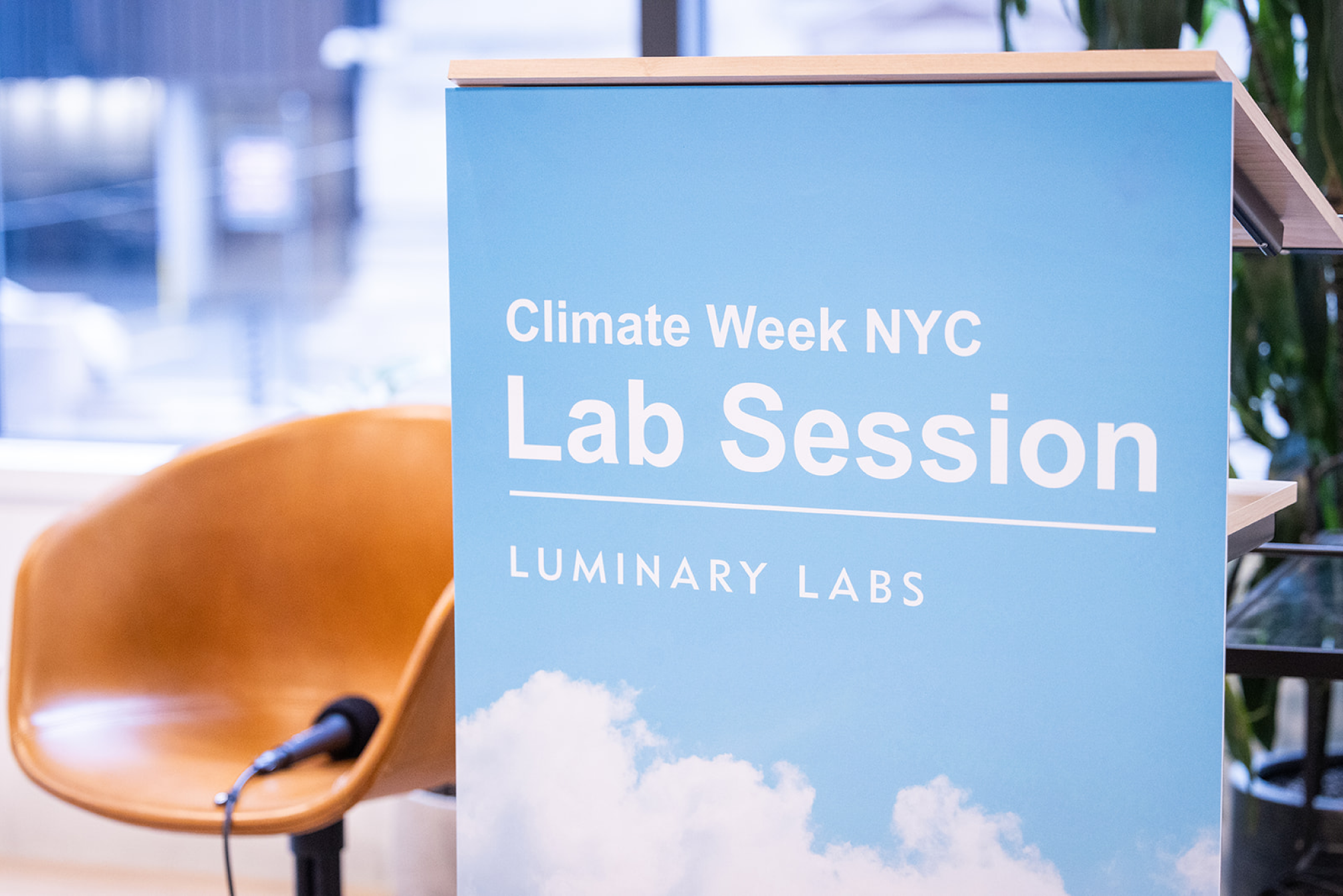Embracing flexibility and investing in tomorrow’s solutions.
Last week, nonprofit organizations, corporations, governments, startups, and other groups interested in addressing the climate crisis hosted 900 events across New York City as part of Climate Week NYC. The sheer number of gatherings — a significant increase from last year — and high level of energy throughout the week may signal that we are entering a new era as more and more leaders recognize climate risks.
Luminary Labs added to the conversation with a special edition of our Lab Session series, Climate Connections: Exploring cross-sector opportunities. On September 24, we convened leaders working at the nexus of climate, infrastructure, health, workforce, and technology to discuss the far-reaching impacts of our changing climate and offer insights on thoughtful strategies, innovative partnership opportunities, and emerging funding sources to integrate climate considerations into diverse industries.
The breadth of Climate Week events and topics may also signal that “climate” is no longer seen as only a concern for specialists; like equity –– or “digital” –– it impacts and connects with everything. Every leader must look at their business and industry through the lens of climate.
This recap captures some of the key ideas from the session — but in many ways, the conversation is just beginning. We plan to share more Climate Week takeaways over the coming weeks; subscribe to the Lab Report for more insights and analysis.
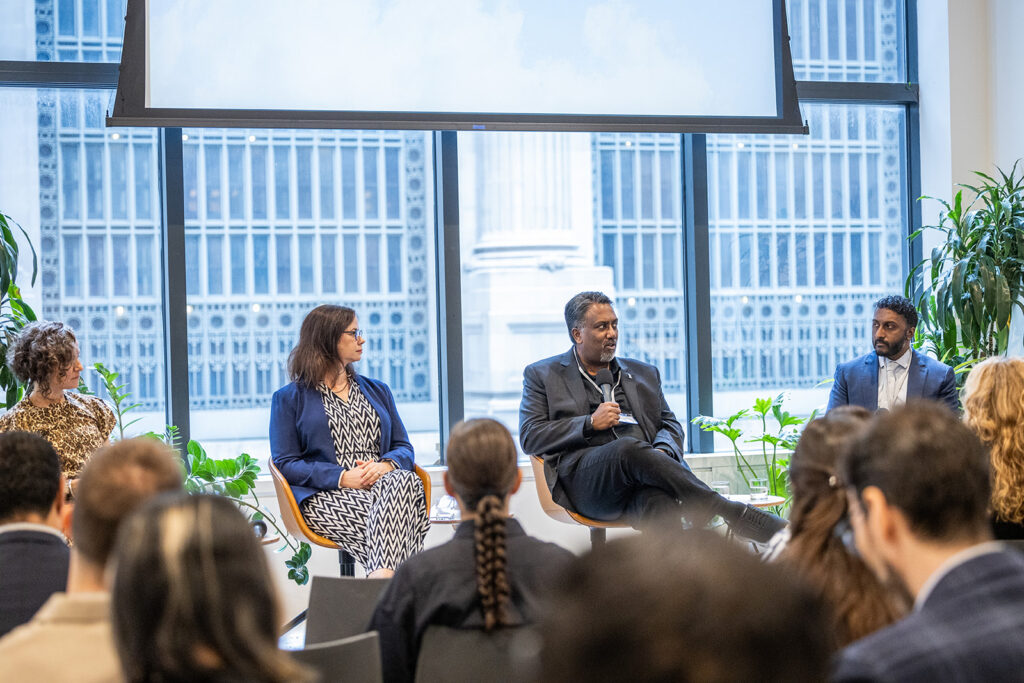
Panelists at the Climate Week Lab Session. From left to right: Sara Holoubek, Sarah Kaufman, Paul Cherukuri, Ph.D., and Dr. Chethan Sarabu.
It can be easy to fall into the trap of oversimplification, labeling some industries, technologies, or interventions as good for the planet and others bad. While there are certainly examples of actors causing extreme harm to the environment, more often this assertion conceals a more complex duality: Essential sectors of our society and economy — from education to transportation — contribute to climate change while also facing the impacts of rising temperatures and extreme weather. Adding another layer of nuance, the experts on the panel also recognized that these sectors will play a key role in driving climate solutions. As each panelist explored this duality, a central question emerged: How can leaders advance sustainable innovations while also ensuring that essential aspects of our society and economy are resilient and thriving?
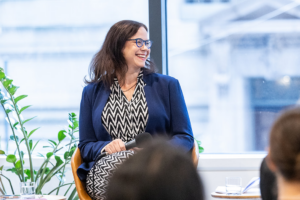
Sarah Kaufman, Director of the NYU Rudin Center for Transportation.
Transportation is a major contributor to greenhouse gas emissions, but that same polluting infrastructure is also highly vulnerable to rising temperatures and extreme weather. Sarah Kaufman, Director of the NYU Rudin Center for Transportation, emphasized that our aging infrastructure is ill-equipped to handle current and worsening climatic extremes. The impacts are already evident: High temperatures and flooding frequently disrupt multiple modes of transportation, and urban sprawl makes implementing more sustainable interventions difficult. Meanwhile, longer and more unpredictable commutes have a negative impact on our health and productivity.
But promising new solutions show that planning for multimodal flexibility can give people options and create greater resilience in urban transportation systems: For example, in Los Angeles, a mobility wallet pilot program provides multiple options for shared transportation services such as buses, rail, bikeshares, and ride-hailing. A commuter can ride a bike to work, pick up groceries nearby, then take a bus home. At a systems level, flexibility and optionality is also critical, and better data makes it possible. In the past, infrastructure planning was based on census data that was only updated every 10 years. Now, transit systems can use real-time data to power more responsive adjustments to services — adding more bus lines to growing neighborhoods or reallocating resources toward in-demand modes of transportation.
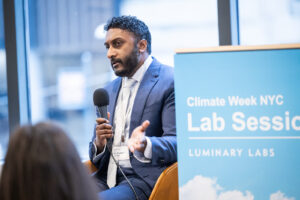
Dr. Chethan Sarabu, Director of Clinical Innovation at Cornell Tech’s Health Tech Hub and co-founder of the Climate Health Innovation & Learning Lab
Healthcare systems are grappling with a dual challenge: They’re already straining under the pressures of climate change while simultaneously contributing to the problem. Dr. Chethan Sarabu, Director of Clinical Innovation at Cornell Tech’s Health Tech Hub and co-founder of the Climate Health Innovation & Learning Lab, described how extreme heat and wildfires are harming communities and straining hospitals, even as many climate-related health impacts are still not identified as such. He also reminded us that health care activities account for 8-10% of greenhouse gas emissions in the U.S. and a staggering 27% of global healthcare emissions, despite treating only a small percentage of patients worldwide. Reliance on single-use materials in healthcare and high consumption of gasses and power contribute to the sector’s significant environmental footprint. But it’s not as simple as reusing and recycling; disposable syringes are wasteful, but have saved millions of lives — and few patients and providers are willing to return to times when life expectancies were shorter and patient outcomes were more precarious.
To address these challenges, the health sector must explore alternatives and opportunities for both adaptation and mitigation, reconsidering its practices and resource utilization to reduce its environmental footprint while maintaining quality care. The newly launched KidneyX Sustainability Prize is just one example of this approach. Life-sustaining dialysis technology consumes large amounts of water and power — and disruptions like natural disasters strain access to those resources, putting patients’ lives at risk. In the longer term, innovations like artificial kidneys and regenerative cell therapies hold tremendous promise, but millions of patients need solutions now. That’s why the prize is offering $7.25 million for technological or process approaches that reduce water or power usage during dialysis and promote equitable access to care.
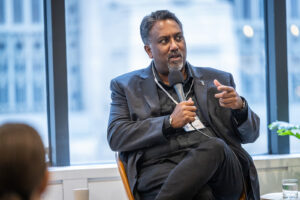
Paul Cherukuri, Ph.D., Chief Innovation Officer and Vice President for Innovation at Rice University
Paul Cherukuri, Ph.D., Chief Innovation Officer and Vice President for Innovation at Rice University, articulated the critical importance of education, research, and training in the climate equation. Schools are among the largest consumers of energy in the public sector and student transportation amounts to the largest transportation fleet; many buildings were designed in the 1950s and will need to adapt and prepare for climate instability. Extreme weather disrupts learning, and K-12 educators are now responsible for preparing students for success in a changing climate. The duality is evident here, too: Education must grapple with its contributions to climate problems and respond to climate-related disruptions while also transforming to prepare future leaders who can develop solutions for a green economy.
Dr. Cherukuri argued that universities need to reconsider their role in this new ecosystem, bridging the traditional divide between vocational training and academic pursuits. Many green jobs of the future — and the skills they will require — don’t yet exist and will need to be developed. Once again, flexibility is key to resilience: Educational institutions can engage with industry partners and communities to foster a new generation of innovators creating new solutions and economic opportunities. As Dr. Cherukuri noted, this will require balancing policy, technology, and capital. Carbon emissions are one big example: Nations and communities can set policies, researchers can tackle the chemistry problem, and investors and industry can unlock funding. At innovation hubs like the ION District in Houston, higher education leaders are exerting influence to pull on all of these levers at once.
Across sectors and industries, leaders will need to identify the right technologies and solutions for the right moment, while simultaneously looking forward and advancing new innovations. We will need to make the most of the tools we already have — and continue to invest in research and discovery that advances better options. Annual budgets and strategic plans will need to acknowledge these needs by maintaining funding and attention on near-term priorities without neglecting longer-range investments in uncovering as-yet-unknown opportunities.
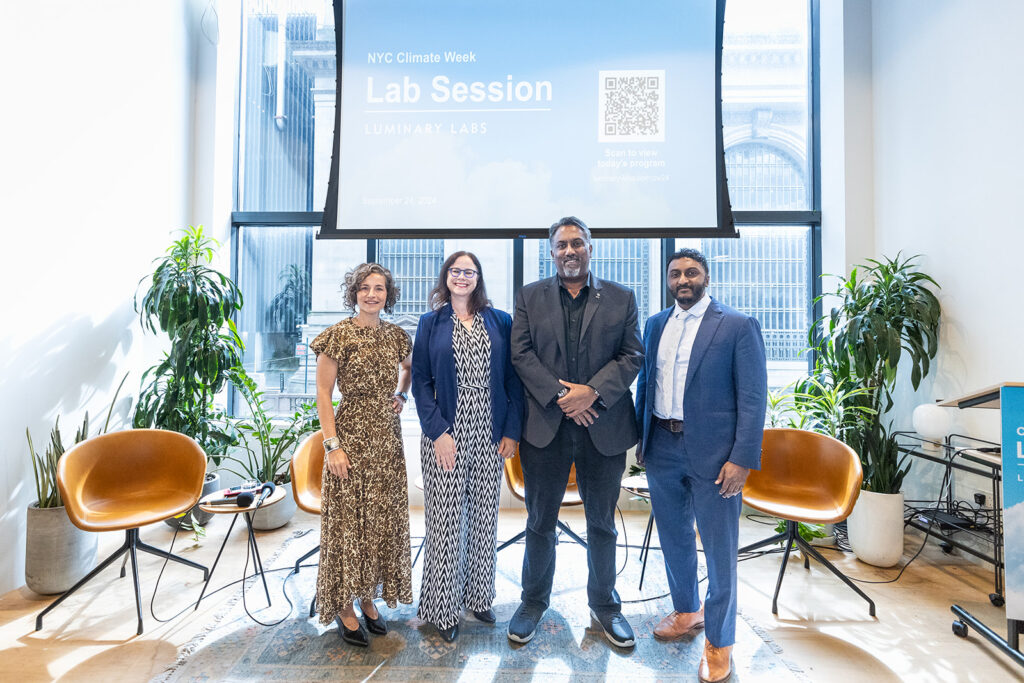
The panel poses for a photo after the event. From left to right: Sara Holoubek, Sarah Kaufman, Paul Cherukuri, Ph.D., and Dr. Chethan Sarabu.
All images courtesy of April Renae.

